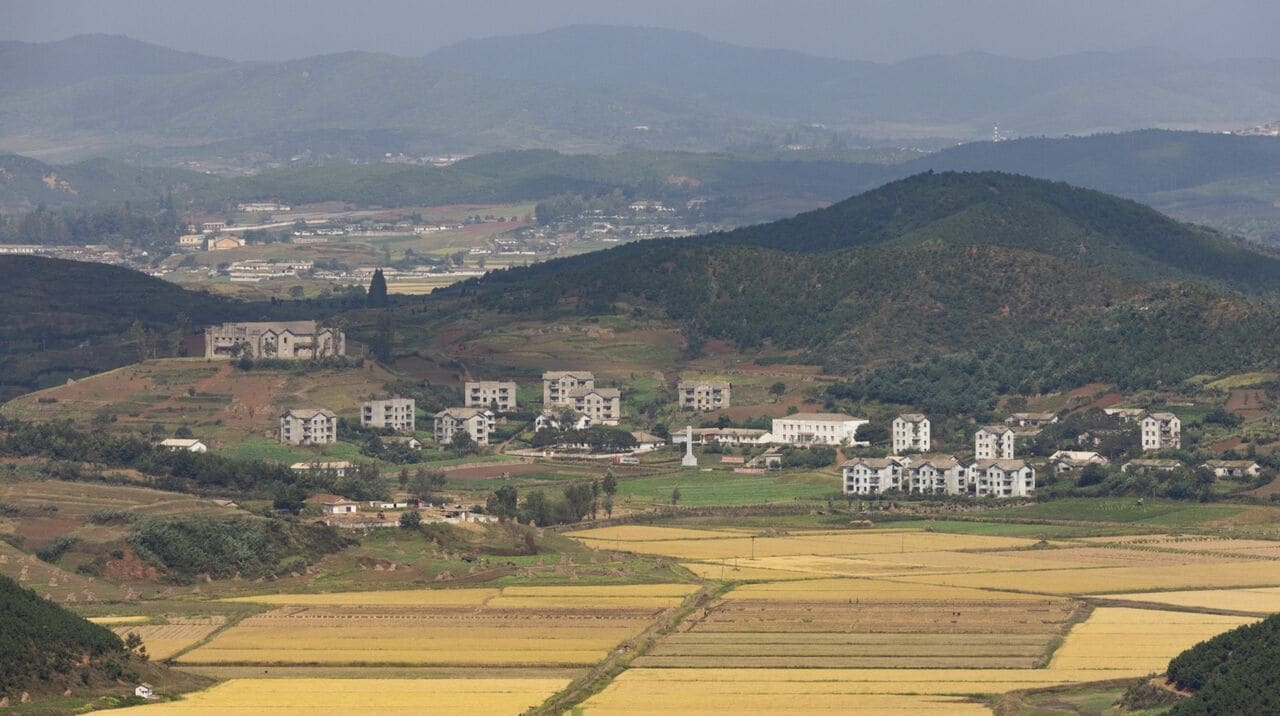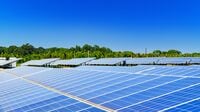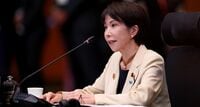
After two years of holding the Covid-19 pandemic at bay, the deadly infection has exploded within North Korea with a speed and virulence that seems to have caught the regime by surprise.
Ground zero for the epidemic is the capital city of Pyongyang, according to official North Korean reports. Authorities are struggling to contain its spread, ordering country-wide lockdowns.
The epidemic hit in late April and by May 14 had infected 820,620 people, causing 42 deaths. On one day alone, from the evening of May 13 to the following day, almost 300,000 people came down with symptoms, and 15 reported died. At least one death, and likely many more, is attributed to the highly infectious BA.2 omicron variant which is currently sweeping the globe.
International public health experts treat this data with some caution as the North Koreans have very limited ability to test for Covid-19. The official reports refer only to outbreaks of “fever,” which are suspected cases of the virus. “We cannot say it is confirmed,” Dr. Nagi Shafik, an Egyptian public health specialist who has worked extensively in North Korea for the last two decades for the World Health Organization and UNICEF, told Toyo Keizai in an interview from Cairo.
Still, the infection hits a country that experienced humanitarian aid specialists describe as being in a “very fragile” condition. The health care system suffers from outdated equipment, a lack of supplies, including drugs, and an intermittent supply of electricity. “The health services are not equipped to meet such an urgent situation,” says Dr. Shafik.
All of this takes place in a country with serious food shortages and chronic malnutrition, compounded by international sanctions and by the decision of the government to close its borders for the last two years due to Covid.
“People are already physically weak,” adds another international humanitarian aid worker, who preferred to remain anonymous due to ongoing work in the country. “It doesn’t take a lot until you are seriously ill.”
North Korea instituted a “zero Covid-19 policy” in January 2020, following a Chinese model of severe border lockdowns and quarantine measures that allowed the regime to claim the country was Covid-free. It is one of only two countries in the world not to have carried out any vaccinations, turning down offers of assistance from China, South Korea, and the global vaccination program COVAX.
“They looked at China and they followed that model,” the humanitarian aid expert told Toyo Keizai. “And then it backfired.”
“North Korea’s population, with no immunity from infection or vaccination, is exceedingly vulnerable to the virus,” concluded a panel of experts convened by the Center for Strategic and International Studies (CSIS) in a March 2022 report. Anticipating the current explosion, the experts predicted that “if a mass outbreak occurs, there will be no short-term solutions.” One expert estimated that a Covid-19 outbreak would cause around 160,000 deaths.
An emergency meeting of the leadership of the Korean Workers Party was held on May 14 to respond to the outbreak. North Korean dictator Kim Jong Un called the pandemic a “great upheaval in our country” and doubled down on a strategy of trying to contain the spread through lockdown of large areas and even of individual factories and farms.
He pointed to “incompetence, irresponsibility, even in the role of the party” and called for a display of national unity in facing the crisis. Kim urged the study of anti-epidemic experiences abroad, particularly in China, but made no move to seek international assistance, even to carry out a rapid vaccination effort.
International experts point to the likely role of two super-spreader events in April held in Pyongyang – a massive celebration of the birthday of North Korean founder Kim Il Sung on April 15, and then 10 days later a large military parade.
“That is high risk,” the aid worker says. “There were huge crowds, with no masks. They took too big a risk with those big crowds gathered in Pyongyang, and in other parts of the country.”
The virus may have been spread also by the dispatch at this time of year of “volunteer” squads to help with rice planting across the country. These teams are essential to North Korea’s rice production. Official media called for extra efforts to carry out anti-epidemic measures with these workers and North Korean leader Kim Jong Un called on the populace not to succumb to fear.
“Kim is telling them to keep working, but in some kind of bubble fashion, as in China,” observes William Brown, a former intelligence officer and economist, specializing in Northeast Asia.
“So, in the industrial cities, seems like there will be pockets, bubbles of disaster, and falling production of things they really need, like fertilizer. Will there be street fights if the formal markets get too restricted and traders move to the streets? Seems likely.”
This is a moment of particular danger on the food front as it coincides with the beginning of seasonal shortages, when the fall harvest has been consumed and the spring plantings are not yet available.
Can North Korea Survive?
The pandemic explosion comes at a time when North Korea has embarked on a new round of missile tests and visible preparations for an underground test of its nuclear warheads. The testing comes with a shift in power in South Korea to a conservative government headed by Yoon Suk-yeol. which is taking a tougher stance toward the North than the previous progressive government. The new government in Seoul is planning to resume large-scale military exercises with the United States, and tensions are likely to grow.
China and Russia, the principal backers of the Pyongyang regime, are unlikely to be paying much attention, given their own troubles. And the U.S. is focused as well on Ukraine, though North Korea will undoubtedly be a major subject of President Joe Biden’s visit to South Korea and Japan later this month.
The pandemic may shift the situation, at least in the short term, if Kim Jong Un seeks international assistance to deal with the health crisis. “It doesn’t mean he won’t do a sudden provocation, like a nuclear test, and then immediately call for talks, pretending to do so from a position of strength,” suggests Brown.
Speculation about the impact of the crisis on the stability of the regime, which is already whispered about in Seoul and Washington, is probably premature and exaggerated, some experts believe.
The North Korean regime retains an impressive capacity to respond and survive this kind of challenge. And the lockdowns may have actually aided the ability of the regime to impose strict internal controls on the populace.
“The vulnerability of their system is lessened dramatically by the fact they don’t move around much,” says former U.S. intelligence officer Brown.
“Most people just stay put even in normal times. We see the big rallies but those are actually very abnormal. And the country is quite wired—electricity and phones and intranet. And extremely organized, with their community cells that report to each other on everything. So, if Pyongyang orders something, it is usually done, quickly.”
Vaccine help coming?
This system, ironically, may also allow North Korea to carry out a rapid large-scale vaccination campaign. Despite their decision to turn down earlier offers of help, North Korea is not opposed in principle to this path, according to the experts’ report issued by CSIS. North Korean officials indicated privately - but not publicly - that they would prefer the mRNA vaccines developed in the West rather than the less effective Chinese Sinovac vaccine or the AstraZeneca vaccines, which were offered by COVAX but were reported to have troubling side effects. The COVAX offer also would have only covered 20 percent of the population which would not have been sufficient.
North Korea has a long history of vaccination programs and a rather effective, if low technology, a system for delivering immunizations. Dr. Shafik recounts his experience in helping to manage the response to a measles outbreak in 2006 when, with international assistance, “millions were vaccinated in no time.”
He believes that if the WHO and UNICEF were to be allowed to operate more fully again inside North Korea – they maintain offices there but no foreigners are presently in the country – the entire population of about 26 million people could be vaccinated in 1-2 weeks.
UNICEF had been assisting with routine immunization for childhood diseases such as measles and polio but these operations have been curbed in the last two years of self-imposed isolation. According to a recent report from UNICEF, North Korea has a functioning “cold chain” management system which can deliver vaccines on refrigerated trucks and keep them sufficiently cool in clinics and hospitals. But a large-scale campaign will require updating the equipment. “Maybe some people in North Korea will say, ‘We don’t want foreigners to be there right now,’” worries Dr. Shafik.
Still experienced humanitarian aid workers are anticipating that North Korea may make a sudden decision to reopen the country to outside help, through established UN channels. “They want to control it somehow and they are weighing their options,” says Dr. Shafik, who says there is ongoing contact by international aid organizations.
The pandemic may represent an opportunity to re-engage North Korea in the realm of humanitarian aid. “The situation now is more desperate than it ever has been before,” says the veteran humanitarian aid worker, noting the surprising decision of the government to admit to so many cases. “I was really surprised that quite concrete figures were given, and day by day. That is a change.”
The aid experts attribute this partly to the need of the regime to alert its own population to the severity of the crisis. But, adds the aid worker, it is also “a message for help.”



